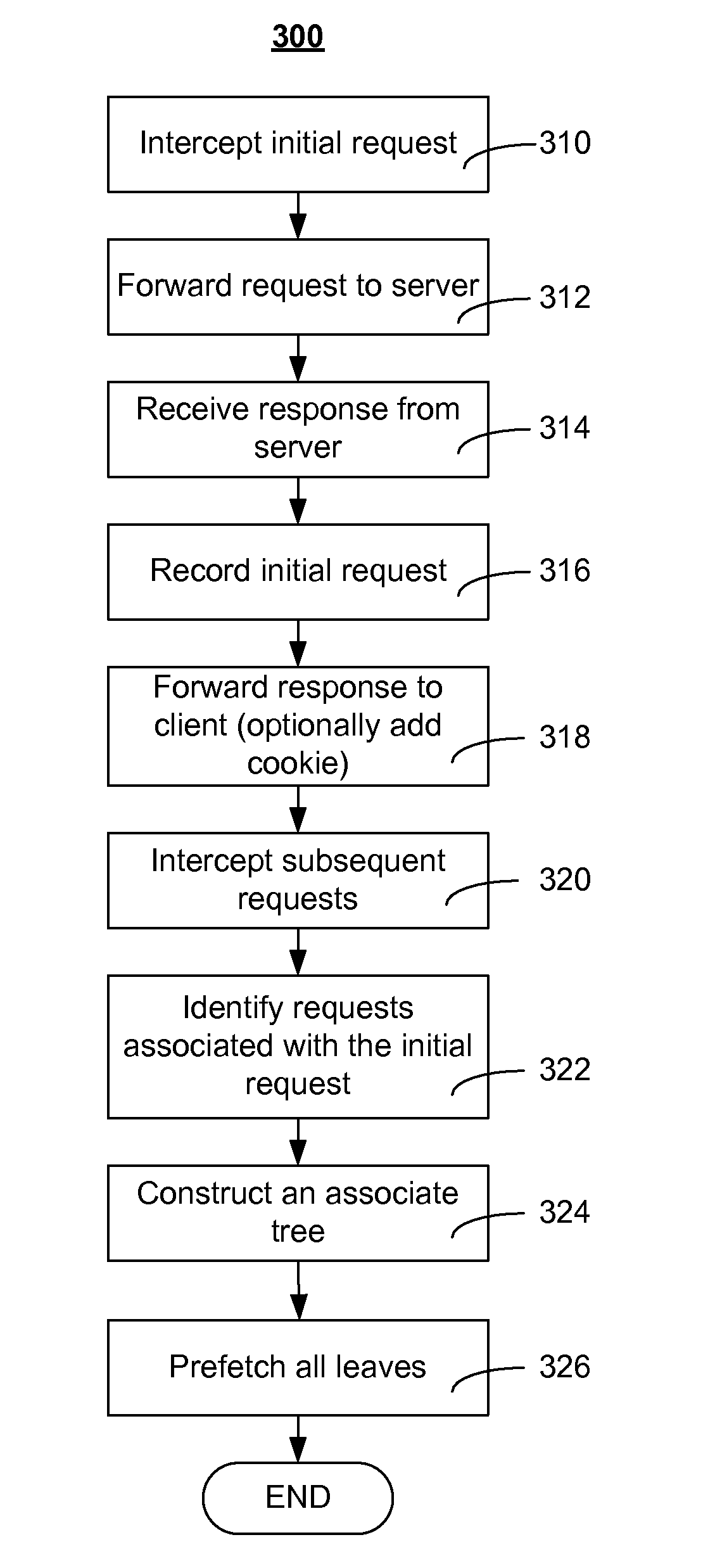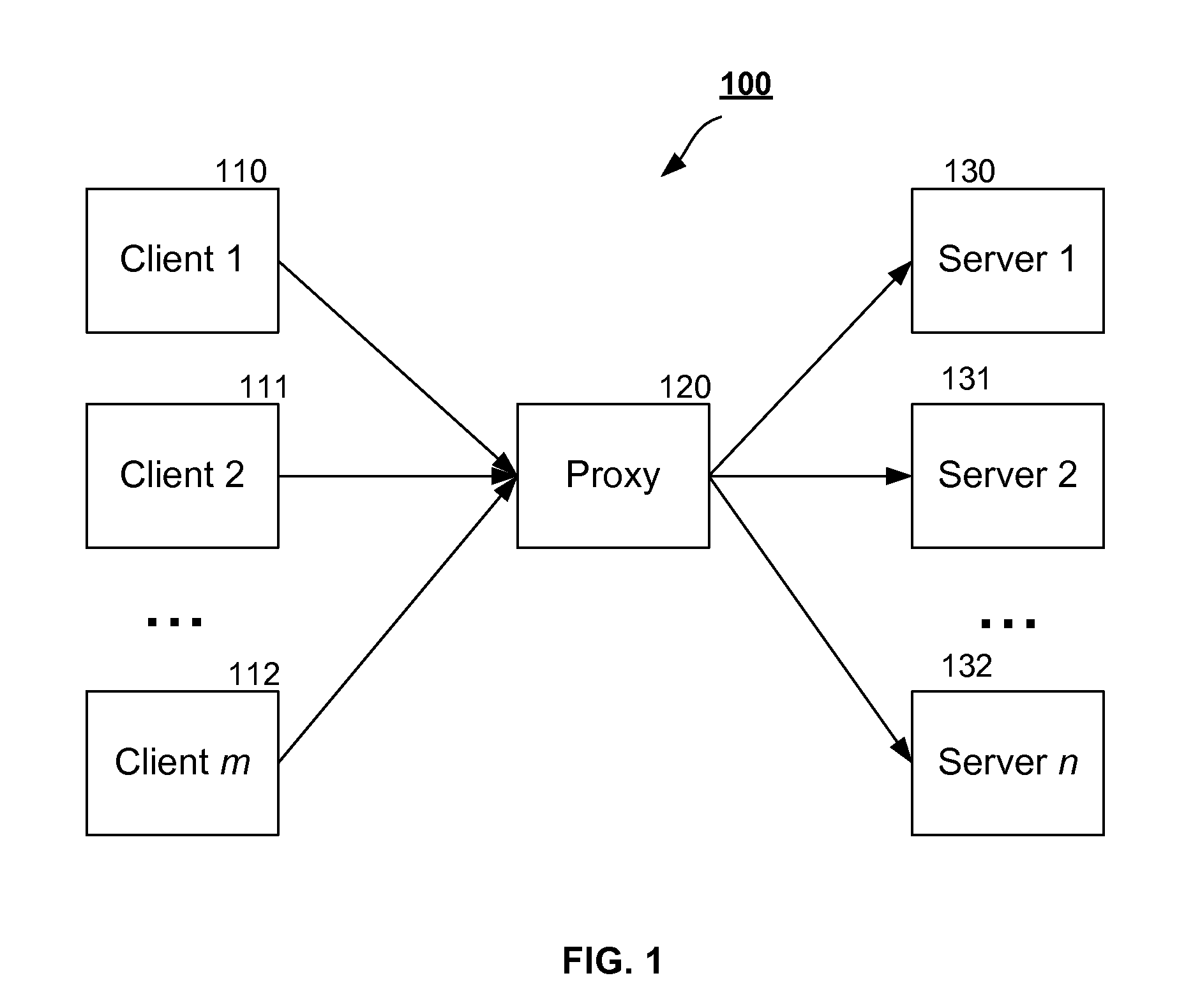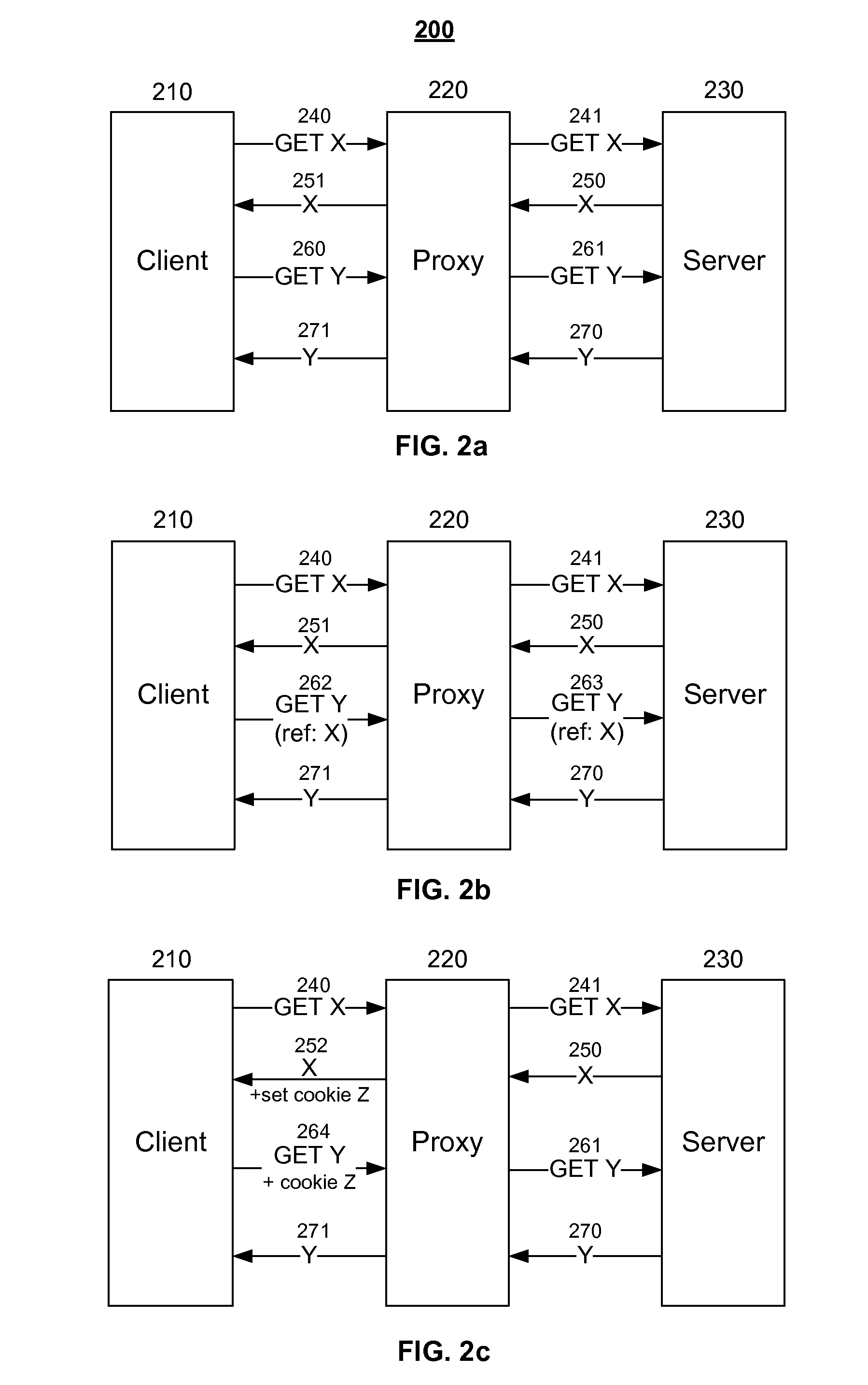Method and apparatus for acceleration by prefetching associated objects
a prefetching and associated object technology, applied in the field of network processing, can solve the problems of poor end-user experience, slow or fragmented page display, and proxy cannot easily establish an association between the embedded objects and their base pages
- Summary
- Abstract
- Description
- Claims
- Application Information
AI Technical Summary
Benefits of technology
Problems solved by technology
Method used
Image
Examples
Embodiment Construction
[0034]The present invention relates to efficient fetching of embedded World Wide Web objects, among other concepts and structures.
[0035]FIG. 1 shows an arrangement 100 of clients 110, 111, 112 and servers 130, 131, 132 communicating via a proxy 120. The proxy 120 may be nearer to the clients, or nearer to the servers, or may be a logical proxy whose physical implementation is composed of multiple physical devices cooperating to deliver a proxy's functionality; those multiple cooperating physical devices may be located near clients, near servers, or in unrelated locations.
[0036]The clients 110, 111, 112 are depicted so as to convey a plurality of clients: there may be as few as one or many more clients than the ones depicted. Likewise, the servers 130, 131, and 132 are depicted so as to convey a plurality of servers. There may be more servers than clients or vice-versa; as suggested by “client m”112 and “server n”132, there is no necessary relationship between the numbers of clients ...
PUM
 Login to View More
Login to View More Abstract
Description
Claims
Application Information
 Login to View More
Login to View More - R&D
- Intellectual Property
- Life Sciences
- Materials
- Tech Scout
- Unparalleled Data Quality
- Higher Quality Content
- 60% Fewer Hallucinations
Browse by: Latest US Patents, China's latest patents, Technical Efficacy Thesaurus, Application Domain, Technology Topic, Popular Technical Reports.
© 2025 PatSnap. All rights reserved.Legal|Privacy policy|Modern Slavery Act Transparency Statement|Sitemap|About US| Contact US: help@patsnap.com



